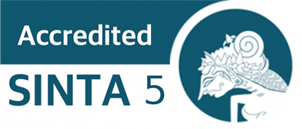ANALISIS SINTAKSIS KALIMAT KOMPLEKS DALAM BAHASA ARAB KLASIK dan MODERN
Abstract
The study aims to analyze complex sentence syntax in classical and modern Arabic. Using a descriptive-analytic approach, the study explores complex sentence structure, differences and similarities between classical and modern Arabic, as well as their implications in Arabic learning. Data is collected from classical texts such as the Qur'an and modern literature, then analyzed to identify the dominant syntax patterns. The results show that although there are variations in the use of complex sentence structures between classical and modern Arabic languages, there are fundamental similarities in the syntax rules that regulate complex phrase formation. This research is expected to contribute to the teaching of Arabic and enrich the understanding of the Arabic evolution over time.
References
Adhimah, S., & Hasan, L. M. U. (2024). Transformasi Pembelajaran Bahasa Arab melalui Gadget oleh Komunitas Guru Anak Usia Dini. Jurnal Pendidikan Anak, 13(1), 65–71. https://doi.org/10.21831/jpa.v13i1.342
Akla, A. (2023). Hasil Cek Turnitin Artikel berjudul Effectiveness of Interactive Web Technology in Improving Students Arabic Language in the Higher Education of Islamic State …. repository.metrouniv.ac.id. https://repository.metrouniv.ac.id/id/eprint/7363/1/2. Effectiveness of Interactive Web Technology in Improving Students Arabic Language in the Higher Education of Islamic State Sumatera.pdf
Al-Saleh, B. (2015). A Proposed Framework to Emerge Modern Technology into Arabic Language Education for Children (Arabic Paper). In Arabic Language and Children: challenges and ….
Annita Kastur, Mustaji, & Yatim Riyanto. (2020). Feasibility of Developing Direct Learning Models With a Life Based Learning Approach. IJORER : International Journal of Recent Educational Research, 1(3), 261–270. https://doi.org/10.46245/ijorer.v1i3.63
Aziz, M. T., Mas, L., Hasan, U., & Adhimah, S. (2024). Jembatan Kurikulum : Inklusi dan Pembelajaran Bahasa Arab dalam Konteks Multikultural. 4(3), 158–166. https://doi.org/10.58737/jpled.v4i3.292
Farida, S., Munib, Sarif, A., & Ghoyasi. (2022). Strategi Pengembangan Kurikulum di SMA Tahfidz Assaidyah Sampang. Kabilah: Journal of Social Community Terakreditasi, 7(1), 208–226.
Feyisa, G. T., Marami, S. N., Dinagde, D. D., Degefe, B. D., Abebe, S. T., Kitil, G. W., & Biratu, A. K. (2024). Comparative study of neonatal hypothermia and associated factors among neonates in rural and urban areas of the Shebadino Woreda, Sidama region, Southern Ethiopia: a community-based comparative cross-sectional study. BMC Public Health, 24(1). https://doi.org/10.1186/s12889-024-19504-8
Hasan, L. M. U., Aziz, M. T., & Nurharini, F. (2024). Integrasi Asas Andragogi Dengan Pembelajaran Muhadastah: Studi Kasus LPBA MASA Surabaya. AL-MAZAYA, Jurnal Pendidikan Bahasa Arab, 11(1), 1–13. https://jurnal.unupurwokerto.ac.id/index.php/almazaya/article/view/270
Kastur, A., Mustaji, M., & Riyanto, Y. (2020). The Practicality and Effectiveness of Direct Learning Model by Using Life-Based Learning Approach. Studies in Learning and Teaching, 1(3), 165–174. https://doi.org/10.46627/silet.v1i3.50
Mualif, A. (2019). Metodologi Pembelajaran Ilmu Nahwu dalam Pendidikan Bahasa Arab. Al-Hikmah, 1(1), 1–23.
Mufidah, Z. (2024). Learning Arabic Vocabulary From the Quran To Facilitate Early Arabic Speaking Skills and Memorizing Quran At Baiturrahman Kindergarten in Malang City. International Journal of Global Accounting, Management, Education, and Entrepreneurship, 4(2), 298–305. https://doi.org/10.48024/ijgame2.v4i2.131
Muhammad Tareh Aziz, & Lestari Widodo. (2023). Pengembangan Program Unggulan di SMP Islam Sabilur Rosyad. DAARUS TSAQOFAH Jurnal Pendidikan Pascasarjana Universitas Qomaruddin, 1(1), 49–55. https://doi.org/10.62740/jppuqg.v1i1.17
Qodir, A., Mas, L., & Hasan, U. (2024). Arabic Alphabet : Aplikasi Interaktif untuk Pembelajaran Bahasa Arab Anak Usia Dini. 3(2).
Ramadhan, R. M. (2019). Strategi Pembelajaran Untuk Meningkatkan Keterampilan Berbicara Dalam Pembelajaran Bahasa Arab. Prosiding Konferensi Nasional Bahasa Arab V, July, 1–23.
Rezi, M., Mudinillah, A., & Agustina, A. (2022). Arabic language education and the active role of educational technology. … Conference on Islamic Education. https://series.gci.or.id/article/529/22/uinibicie-2021
Shabur, A., Amadi, M., & Sholikha, D. W. (2023). Perkembangan Pendidikan Bahasa Arab di Era Digital: Sistematic Literature Review. Jurnal Motivasi Pendidikan Dan Bahasa, 1(3), 301–309. https://journal.widyakarya.ac.id/index.php/jmpb-widyakarya/article/view/1112
Soleh, M. B. (2022). صخلم ةيلاع ةسردم في رشع يدلاحا فصلا بلاط في ةيبرعلا تادرفلما باعيتسا ينستح في ينمختلا ةبعل يرثتأ " : لحاصلا ردب دممح " يابااروس ديحوتلا ةيبرعلا تادرفلما باعيتسا ، روصلبا ينمختلا ةبعل : ةيسيئرلا تاملكلا ةيبرعلا ةغللا برتعت . ةيلاعلاو ، ةيوانصلاو ، ةيئادتبل. 01(01).
Syaifudin, M. (2022). Implementasi Media Permainan Matching Gambar dan Kata Berbasis Power Point Untuk Pembelajaran Mufradat di SMA At-Tarbiyah Surabaya. Al-Mu’Arrib: Journal of Arabic Education, 2(2), 126–142. https://doi.org/10.32923/al-muarrib.v2i2.2712
Syaifudin, M., Nurharini, F., & Ramadhan, H. D. (2022). Pengaruh Media Pembelajaran Kahoot terhadap Motivasi Belajar Bahasa Arab Siswa di MTs Al- Qur’an Terpadu An- Nawa Surabaya. MUMTAZA : Journal of Arabic Teaching, Linguistic And Literature, 02(01), 16–28.
Zaky, A., Harahap, M. S., & ... (2023). The role of technology in the development of Arabic language education in Indonesia. In Edumaspul …. download.garuda.kemdikbud.go.id. http://download.garuda.kemdikbud.go.id/article.php?article=3406214&val=13953&title=The Role of Technology in the Development of Arabic Language Education in Indonesia
امشاسفند, ج. (n.d.). The place of information technology in education of arabic language skills. In مجله علمی" اللغة العربیة وآدابها", 2009. جامعة طهران.
Copyright (c) 2024 Muhammad juyat miko

This work is licensed under a Creative Commons Attribution-NonCommercial-ShareAlike 4.0 International License.







